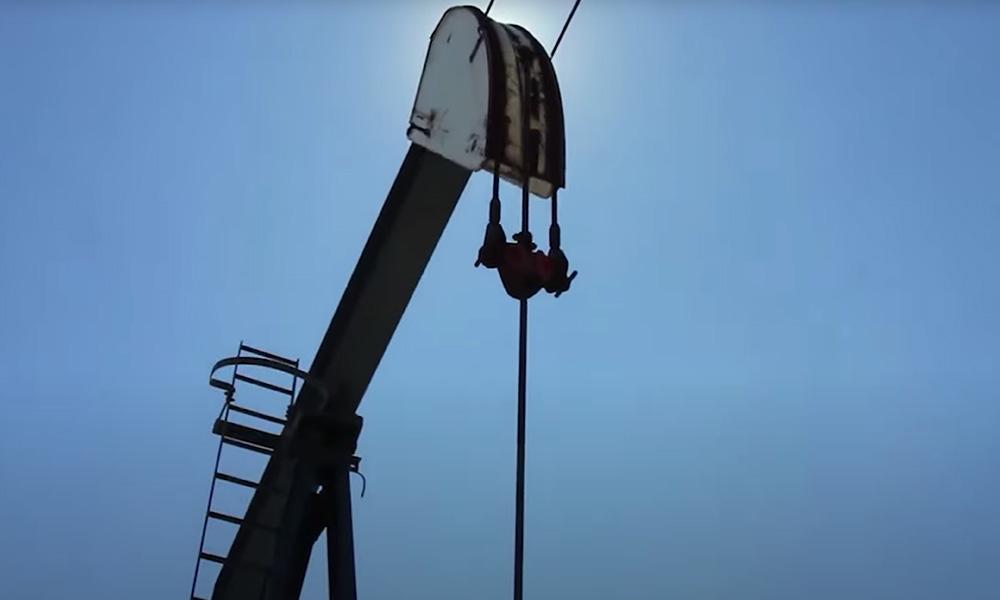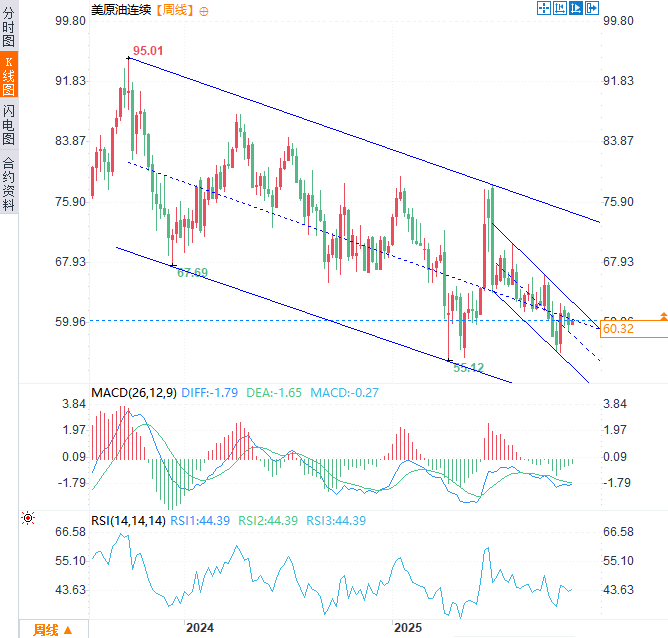The US government shutdown eased oil market demand, the Russia-Ukraine conflict continued, but cracks appeared in sanctions.
2025-11-10 14:19:51

Optimism surrounding the Senate funding agreement to restart the government supports oil prices.
On November 9th local time, the U.S. Senate passed a temporary funding bill aimed at ending the government shutdown, providing funding for the government until January 30, 2026. November 9th marked the 40th day of the U.S. government shutdown, which began on October 1st.
The package under discussion would tie the appropriations bill to three long-term spending bills and promise to arrange a separate vote for Democrats on extending the health insurance tax credit.
Despite the glimmer of hope, the reopening of the US government's vote remains uncertain. The Senate has not yet set a final vote date, and a unanimous vote from all members is required to expedite the process; any member can use procedural means to delay for several days. House Speaker Johnson has promised to give members 48 hours' notice before they return to vote, but a specific timetable remains unclear.
From a market perspective, expectations that approximately 800,000 unpaid federal employees will soon receive their back pay, that benefit programs will be restarted, and that critical government services will be restored are boosting market sentiment.
The optimism surrounding the agreement is supported by forecasting platforms like Polymarket, which currently shows a greater than 61% probability that the government shutdown will end between November 12 and 15. Despite rising confidence, the agreement still faces numerous hurdles. While the Senate appears close to reaching a deal, it still needs House approval to end the longest government shutdown in U.S. history.
For the crude oil market, the government's reopening is expected to boost domestic demand for goods and services (including energy) in the United States, and the resumption of suspended government spending will support crude oil demand. In addition, improved risk appetite tends to weaken safe-haven premiums, prompting funds to flow into commodities such as oil .
Russia launches large-scale attack on Ukraine
Last Saturday, Russia launched a large-scale airstrike on central and eastern Ukraine, which, according to Ukrainian authorities, has killed at least four people and injured 26.
The Ukrainian Air Force announced on Telegram Saturday morning that Russia launched 503 projectiles overnight—including 458 drones and 45 missiles, of which 415 were shot down and the remaining 78 hit 25 different locations in Ukraine.
Ukrainian President Volodymyr Zelenskyy posted on Telegram Saturday morning that the targets of Russia’s latest attacks remain unchanged: daily life, residential buildings, our energy systems and infrastructure.
The city of Dnipro was severely damaged, with three people killed and 11 others injured, including children, according to the regional military administration. A drone struck an apartment building in the city. Authorities also reported three injuries in the Samarsky district near Dnipro Petrovsk Oblast.
In the Kharkiv region, at least one person was killed in the village of Rokitne; eight others were injured in the suburbs of Kharkiv; one person was injured in the town of Chuguyev; and one person was injured in the village of Grushivka, according to the regional military administration. The mayor of Kharkiv posted on Telegram Saturday morning that the city is facing a severe power shortage.
In addition, one person was injured in Poltava Oblast and another in neighboring Kyiv Oblast; both military authorities reported these incidents. Authorities stated that the attack on Poltava Oblast's energy infrastructure resulted in power outages, water shortages, and heating disruptions in some communities.
The Russian attack marks the ninth major attack on Ukraine's fuel supply infrastructure since early October, with the Ukrainian state-owned energy company Naftogaz accusing Russia of deliberately targeting "enterprises that provide fuel and heat to the Ukrainians" during the winter in a Telegram post on Saturday morning.
The Russian Ministry of Defense confirmed in a Telegram post on Saturday morning that Russian forces had launched nighttime attacks on Ukrainian military and energy infrastructure. The Ministry stated that this "massive strike" was a response to "terrorist acts by Ukraine against civilian infrastructure within Russian territory."
The ongoing Russia-Ukraine conflict provides a risk premium for oil prices .
Trump is considering excluding Hungary from Russian oil sanctions.
U.S. President Donald Trump told Hungarian Prime Minister Viktor Orbán last Friday that the United States was “considering” exempting Hungary from sanctions targeting Russian oil. This move weakens one of the few remaining symbolic levers the U.S. has on Russian energy exports, while also sending a flexible signal to a long-time ally who has been playing both sides in the energy chessboard.
Exemption negotiations began just as Ukrainian President Volodymyr Zelenskyy vowed to cut off Russia's oil supply to Hungary via the Druzhba pipeline. Zelenskyy stated that the oil stream "will disappear from Europe" as Kyiv takes steps to prevent Russia from funding the conflict through energy exports.
However, MOL, Hungary’s top refiner, says it now sources up to 80% of its crude oil from non-Russian suppliers, a stark contrast to its stance two years ago that diversification was impossible.
Hungary currently relies on Russian crude oil for approximately 86% of its oil supply, and its refineries were built to process Russian Urals crude. Switching to a different feedstock would mean expensive equipment upgrades and higher input costs, but a recent statement from the MOL Group suggests that actual progress has far exceeded what the Budapest authorities have publicly acknowledged. If true, this would undermine Orbán's assertion that "the lifting of sanctions is crucial to Hungary's energy security."
Trump's willingness to discuss waivers is nothing new. Both domestically and in foreign policy, he has long used the flexibility of public statements as a negotiating tool—keeping his opponents guessing while simultaneously securing concessions. This move may be a signal to Brussels, Kyiv, and even Moscow, indicating that Washington wants to simultaneously constrain all three parties.
For the oil market, the exemption has a limited direct impact on the actual flow of the Druzhba pipeline, given its relatively small global supply. However, it could set a dangerous precedent—other countries reliant on Russian crude oil, such as Slovakia, might follow suit if Hungary receives special treatment.
This move will undermine the credibility of the sanctions mechanism and further blur the lines between geopolitics and energy pragmatism. The political signal it sends could weaken the effectiveness of sanctions against Russia in the medium to long term, thereby limiting the upside potential for oil prices .
Technical Analysis
Oil prices are currently hovering near the middle of a three-year downtrend channel and a five-month channel, serving as key short- and long-term reference points for the market as it navigates supply uncertainties and labor market risks in 2026.
On the upside, the first resistance level is around $63 in the short-term channel, followed by $66.80. A successful break above this level would extend the potential gains to around $70, the upper rail of the long-term channel, suggesting a possible sustained structural recovery in crude oil prices over the next few years.
On the downside, if the price breaks below the lower boundary of the short-term channel at $54.50 and the annual low of $55, it could open the way for a further drop to the lower edge of the channel near $49, at which point another technical rebound may occur.

(US crude oil weekly chart, source: FX678)
At 14:19 Beijing time, US crude oil futures were trading at $60.33 per barrel.
- Risk Warning and Disclaimer
- The market involves risk, and trading may not be suitable for all investors. This article is for reference only and does not constitute personal investment advice, nor does it take into account certain users’ specific investment objectives, financial situation, or other needs. Any investment decisions made based on this information are at your own risk.





















